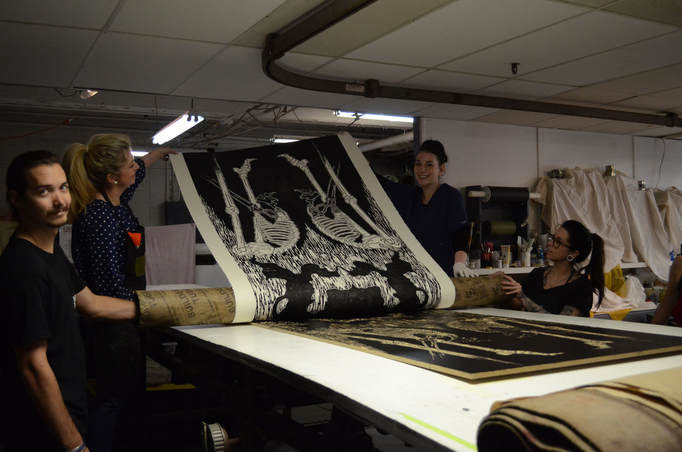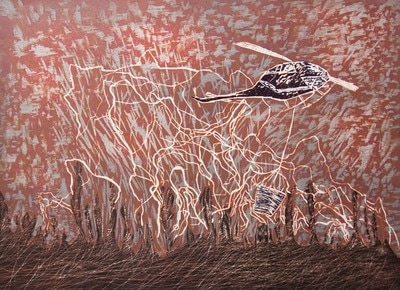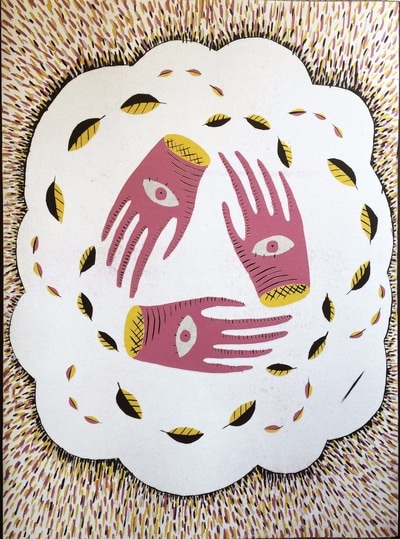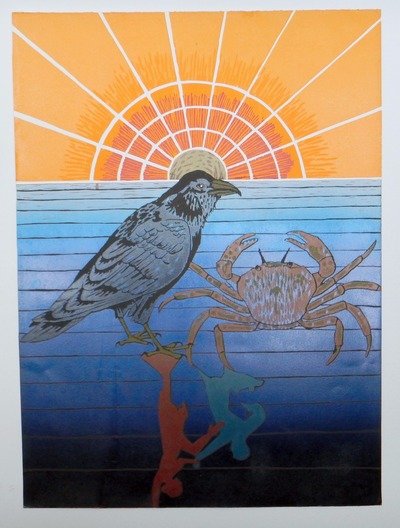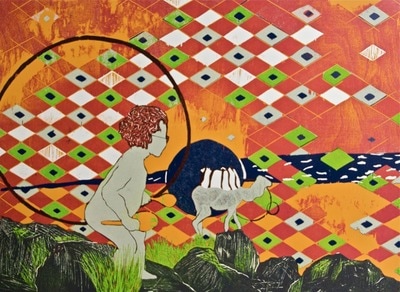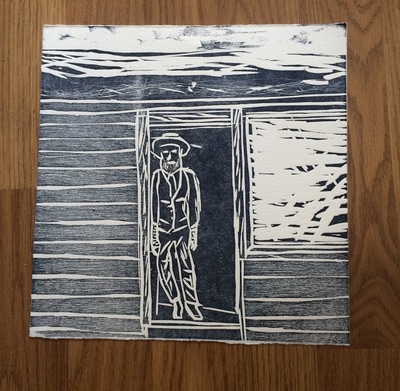OUR PROJECTEn chair et en bois | of flesh and of wood
En chair et en bois is a cross-institutional project that takes place within the context of la Biennale internationale d'estampe contemporaine de Trois-Rivières. The high-profile, international scope of the biennale offers a unique opportunity of exposure for both student participants and Concordia University. We are six fine arts undergraduate students at Montréal's Concordia University and we have a love for contemporary printmaking. Our group includes Mathilde Rohr, Nikki Kuentzle , Jessica Thibault, Michael MacLean , Nix Bureau-Oxton, Odessa Dobbie, and our lovely professor, Bonnie Baxter. We're also working in collaboration with students from Université du Québec à Trois-Rivières . Their group is led by professor Mylene Gervais and includes her students Valerie Guimond, Ahad Moslemi, Frederique Pelletier, Marie-Ève Arpin, Fannie Constant, and Jeremie Deschamps Bussieres. We have already begun the work on this very exciting three-part project. Each artist is responsible for cutting and printing their own 3 x 6 ft woodblock. (WOAH!) |
Part one: a five-day residency in February at the Gravity Press Experimental Print Shop in North Adams, Massachusetts. The 5,500 sq ft studio houses eight presses—the largest press measuring 5 x 11 ft—will allow us to print our oversized woodblocks.
Part two: as one of the biennal's parallel public events, the En chair et en bois group will print their large-format woodblocks with a steamroller on Université du Québec à Trois-Rivières' campus. This event will allow us to bring printing beyond the studio and gives us a valuable chance to engage with the public.
Part three: the En chair et en bois student exhibition at La Salle Jeanne Vanasse du Cégep de Trois-Rivières will be taking place this coming summer in parallel with the twentieth anniversary of the contemporary printmaking biennale in Trois-Rivières.
This project is a unique opportunity to broaden our network amongst local and international artists, to build technical and professional skills, and to create our first large-scale work, allowing us to put into practice—and go beyond—what we have learned in the classroom. We are fortunate to have our work showcased as one of the parallel events in a highly publicized, well-established, and major art exhibition featuring more than 300 prints with 57 artists from 26 countries. This biennale is known as the largest event of its kind in Canada!
Part two: as one of the biennal's parallel public events, the En chair et en bois group will print their large-format woodblocks with a steamroller on Université du Québec à Trois-Rivières' campus. This event will allow us to bring printing beyond the studio and gives us a valuable chance to engage with the public.
Part three: the En chair et en bois student exhibition at La Salle Jeanne Vanasse du Cégep de Trois-Rivières will be taking place this coming summer in parallel with the twentieth anniversary of the contemporary printmaking biennale in Trois-Rivières.
This project is a unique opportunity to broaden our network amongst local and international artists, to build technical and professional skills, and to create our first large-scale work, allowing us to put into practice—and go beyond—what we have learned in the classroom. We are fortunate to have our work showcased as one of the parallel events in a highly publicized, well-established, and major art exhibition featuring more than 300 prints with 57 artists from 26 countries. This biennale is known as the largest event of its kind in Canada!
WHAT IS WOODCUT PRINTMAKING?
Woodcut is a relief printing technique in printmaking. The artist carves an image into the surface of a block of wood—typically with gouges—leaving the sections that will transfer the print level with the surface of the block. Areas that the artist cuts away carry no ink, while characters or images at surface level carry the ink to produce the print. The block is cut along the long grain of the wood (unlike wood engraving, in which the block is cut in the end-grain). The surface is covered with ink by a roller (brayer), leaving ink on the flat surface but not the sections that have been cut away.
Multiple colours can be printed by keying the paper to a frame around the woodblocks (using a different block for each colour). The art of carving the woodcut can be called xylography, but this is rarely used in English for images alone—although that and xylographic are used in connection with block books, which are small books containing text and images in the same block. ‘Single-leaf woodcut’ is a term for a woodcut presented as a single image or print, as opposed to a book illustration.
Multiple colours can be printed by keying the paper to a frame around the woodblocks (using a different block for each colour). The art of carving the woodcut can be called xylography, but this is rarely used in English for images alone—although that and xylographic are used in connection with block books, which are small books containing text and images in the same block. ‘Single-leaf woodcut’ is a term for a woodcut presented as a single image or print, as opposed to a book illustration.
